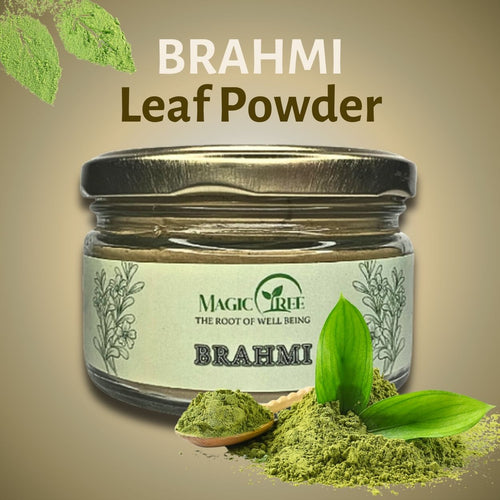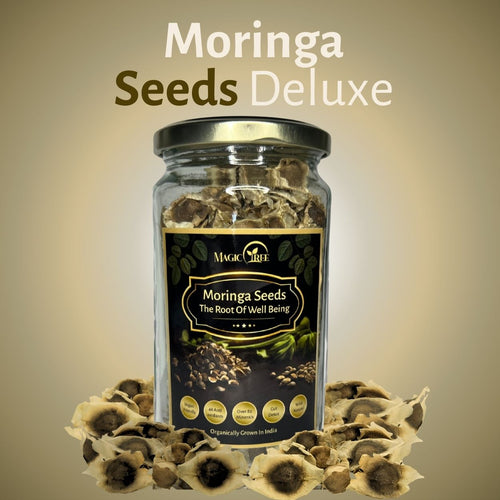Melanocytes are specialized skin cells responsible for the production of melanin, the pigment that gives skin, hair, and eyes their color. Beyond aesthetics, melanin plays a protective and regenerative role in various body systems. From shielding the skin against UV damage to supporting brain health and sensory function, melanin is more than just a pigment — it’s a bioactive molecule with profound systemic benefits.
This blog explores how herbal remedies, dietary choices, and physical activity can naturally enhance melanocyte health and melanin production — along with a deeper look into why melanin is crucial for optimal health and well-being.
Understanding Melanocytes and Melanin
Melanocytes reside in the basal layer of the epidermis and produce melanin through a process called melanogenesis. This process involves several enzymes, notably tyrosinase, which catalyzes the conversion of the amino acid tyrosine into melanin.
Why Melanin Matters More Than You Think
Melanin exists in two primary forms: eumelanin (brown-black) and pheomelanin (red-yellow), and its production is influenced by genetics, hormones, UV exposure, and oxidative stress. While its most visible function is skin pigmentation, melanin also plays critical internal roles:
Eyes: Melanin in the iris and retinal pigment epithelium protects against UV and blue light, helping to prevent age-related macular degeneration and cataracts.
Ears: Inner ear melanin helps regulate cochlear function, and reduced melanin is associated with increased risk of hearing loss.
Brain: Neuromelanin, a distinct form of melanin, is found in brain regions such as the substantia nigra and locus coeruleus. It protects neurons by binding and neutralizing heavy metals and toxins, with reduced levels linked to neurodegenerative disorders like Parkinson’s.
Wound Healing: Melanin plays a role in immune modulation and tissue repair. Research suggests melanocytes influence keratinocyte activity, aiding in quicker re-epithelialization and protection against infection during healing.
Melanin and Aging: Visible and Invisible Decline
As we age, melanocyte activity and melanin production naturally decline. This process, known as melanocyte senescence, is marked by reduced tyrosinase expression and oxidative DNA damage within pigment cells. Over time, this leads to:
Gray Hair: Fewer active melanocytes in hair follicles result in loss of pigment, producing grey or white hair.
Washed-Out Skin Tone: Reduced melanin means the skin appears dull, uneven, and more prone to photoaging.
Lower UV Protection: With less melanin, the skin becomes more vulnerable to sun damage, accelerating wrinkles and age spots.
This age-related decline underscores the importance of maintaining melanocyte health not just for cosmetic reasons but also for systemic protection.
Understanding Melanocytes and Melanin
Melanocytes reside in the basal layer of the epidermis and produce melanin through a process called melanogenesis. This process involves several enzymes, notably tyrosinase, which catalyzes the conversion of the amino acid tyrosine into melanin. Melanogenesis can be disrupted by oxidative stress, nutrient deficiencies, aging, or autoimmune conditions such as vitiligo.
Support for melanocyte function thus involves:
Reducing oxidative stress
Stimulating tyrosinase activity
Supporting healthy immune responses
Enhancing nutrient availability for melanin production
Natural Herbs that Enhance Melanocyte Function
1. Psoralea corylifolia (Babchi)
Therapeutic Action:
Babchi is a powerful Ayurvedic herb traditionally used to treat skin disorders like vitiligo. It contains psoralen, a natural photosensitizer that stimulates melanogenesis when combined with UV exposure.
Mechanism: Psoralen intercalates into DNA and, upon UV exposure, enhances tyrosinase activity, promoting melanocyte proliferation and melanin synthesis.
Use: Typically used as an extract consumed as a tea
2. Nigella sativa (Black Seed)
Therapeutic Action:
Rich in thymoquinone, black seed oil has antioxidant and anti-inflammatory properties that protect melanocytes from oxidative stress and autoimmunity.
Mechanism: Thymoquinone reduces inflammatory cytokines and inhibits oxidative damage, which is a known factor in melanocyte apoptosis.
Use: Can be consumed as raw seeds of as an oil - Our black seed oil is available here
3. Ginkgo biloba
Therapeutic Action:
Known for improving circulation and neurological health, Ginkgo biloba has shown promise in stabilizing vitiligo and improving repigmentation.
Mechanism: Ginkgo's flavonoids combat oxidative stress, and its terpene lactones enhance microcirculation, improving nutrient delivery to skin cells.
Use: Oral extract (standardized to 24% flavone glycosides) is commonly used in doses of 40–120 mg/day.
4. Curcuma longa (Turmeric)
Therapeutic Action:
Curcumin, the active compound in turmeric, is a potent anti-inflammatory and antioxidant agent that helps preserve melanocyte function.
Mechanism: Curcumin inhibits TNF-alpha and other inflammatory mediators while boosting cellular antioxidant defenses like glutathione and catalase.
Use: Best absorbed when paired with black pepper (piperine); you can make your own, teas, or powders.
5. Green Tea (Camellia sinensis)
Therapeutic Action:
Green tea is packed with polyphenols, particularly epigallocatechin gallate (EGCG), which protect cells from UV-induced DNA damage.
Mechanism: EGCG supports DNA repair and inhibits pathways that lead to melanocyte destruction.
Use: Drink regularly or apply as a cooled tea compress to the skin
Diet for Supporting Melanocyte Function
Nutrition plays a foundational role in melanogenesis. Certain vitamins and minerals act as cofactors for the enzymes involved in melanin synthesis.
1. Tyrosine-Rich Foods
Why it works: Tyrosine is the amino acid precursor to melanin. Adequate intake is essential for supporting melanogenesis.
Sources: Almonds, pumpkin seeds, soy products, eggs, and cheese.
2. Copper
Why it works: Copper is a critical cofactor for tyrosinase, the rate-limiting enzyme in melanin production.
Sources: Shellfish, liver, dark chocolate, seeds, and nuts.
3. Vitamin B12 and Folate
Why they work: Deficiencies in B12 and folate are linked to depigmentation disorders. They support DNA synthesis and cell repair.
Sources: Leafy greens, legumes, fortified cereals.
4. Vitamin D
Why it works: Vitamin D influences gene expression in melanocytes and may play a role in skin immunity and pigment cell survival.
Sources: Sunlight, fatty fish, egg yolks, Lichen supplements.
5. Antioxidants (Vitamin C, E, Selenium)
Why they work: Antioxidants protect melanocytes from oxidative stress, one of the main causes of cell damage and pigment loss.
Sources: Berries, citrus fruits, seeds, nuts, and green leafy vegetables.
Exercise and Circulatory Health for Melanocyte Vitality
Regular physical activity indirectly supports melanocyte health in several powerful ways:
1. Enhanced Circulation
Benefit: Improved blood flow ensures oxygen and nutrients reach skin cells efficiently, supporting melanocyte function and repair.
2. Hormonal Balance
Benefit: Exercise regulates cortisol levels and improves insulin sensitivity, both of which can influence inflammatory and immune pathways that affect melanocyte survival.
3. Immune Modulation
Benefit: Moderate exercise enhances immune surveillance and reduces chronic inflammation, which can help prevent autoimmune melanocyte destruction.
Best Practices:
Include cardiovascular activities (e.g., walking, swimming) 3–5 times a week.
Practice yoga or tai chi to reduce stress-related melanocyte damage.
Holistic Techniques for Long-Term Melanocyte Support
Holistic approaches consider body, mind, and spirit — which can be essential for managing chronic or autoimmune pigment disorders.
1. Stress Management
Chronic stress can trigger immune responses that lead to melanocyte destruction. Techniques such as mindfulness meditation, breathing exercises, and journaling can reduce stress hormones like cortisol.
2. Detoxification
Supporting liver function helps eliminate toxins that can impair melanocyte function. Use gentle detox practices: increase fiber intake, hydrate, and incorporate herbs like milk thistle and dandelion root.
3. Phototherapy (Under Guidance)
Controlled UV exposure, particularly narrow-band UVB, can stimulate melanogenesis. Natural sun exposure in moderation, combined with herbs like psoralea, can be effective under supervision.
Conclusion
Enhancing melanocyte function and melanin production naturally involves a multifaceted approach — combining the power of herbal medicine, nutrient-rich foods, and lifestyle practices. Herbs like babchi, turmeric, and Ginkgo biloba offer targeted therapeutic actions, while a balanced diet rich in antioxidants and minerals lays the groundwork for healthy melanogenesis. Your melanocyte function declines naturally as you age so it is important to take action in your daily routine to preserve it. Exercise and holistic techniques round out the strategy, ensuring that melanocytes are not just stimulated, but nourished and protected in the long term.



